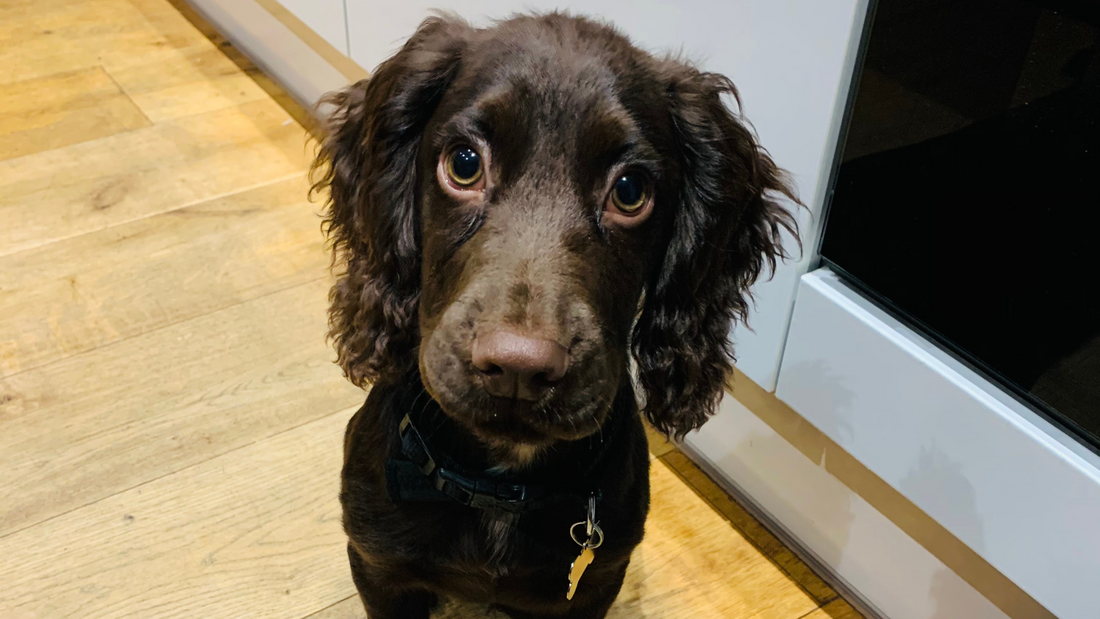
Oban — A Dog, A Town, A Dram
By Rafi Mercer
There are whiskies you drink and forget, and there are whiskies that stay with you — not just for flavour, but for the way they catch on life itself. For me, Oban is one of those. I visited the distillery years ago, on a trip that had nothing of ceremony about it, yet what I found there settled into me. It was more than a tour, more than a dram. It became a name, a memory, even a companion. I named my dog after it — a working cocker spaniel with a nose as curious as any master blender’s. Oban the whisky, Oban the dog, Oban the place: all bound together, threads of one story.
The town itself sits where the Highlands meet the sea, a natural harbour that has long been a gateway to the isles. When I arrived, it felt like the edge of something — not the end, not quite the beginning, but a threshold. The distillery is tucked right into the town, a stone’s throw from the water, one of Scotland’s smallest. Its warehouses lean into the rock, its stills working within walls that seem to breathe their own history. To stand inside is to sense not grandeur but intimacy, a working heart in the middle of a coastal town.
The dram they poured that day was Oban 14, the distillery’s signature. In the glass, it was gold with a trace of copper. On the nose: citrus, honey, sea air. On the palate: sweet fruit at first, then brine and smoke, oak and spice. A balance of Highland depth and maritime freshness. It was whisky that mirrored the geography itself — cliffs and harbour, heather and salt. I remember holding it to the light, then taking a sip as gulls called outside, and thinking: this isn’t just a drink, it’s a place you can carry.
That idea stayed with me. Weeks later, when a rich brown cocker spaniel pup came tumbling into my life, it seemed only natural to call him Oban. He carried the same mixture: lively and bright, yet grounded, a dog that seemed to embody both sea spray and earth underfoot. Every time I call his name across a field, I hear not just the dog but the town, the distillery, the dram. Whisky as memory, whisky as echo.
There is something powerful about how drink and place intertwine. Oban 14 doesn’t just taste of malt and oak; it tastes of thresholds, of edges, of standing between mountain and sea. That day at the distillery gave me more than notes on a tasting card. It gave me a way of remembering — of folding geography into the senses, of naming, of carrying place forward into daily life. The whisky became a story, and the story became part of me.
In listening bars, I often think of Oban. Not because it is the rarest or most complex, but because it carries that idea of balance, of being between. It is the whisky equivalent of Bowie’s Low — an album that sits between pop and ambient, song and atmosphere. Both the dram and the record are about liminality, about the strength that comes from occupying more than one world at once.
What Oban taught me is that whisky is never just about what’s in the glass. It’s about the places you drink it, the people you drink it with, the memories it gathers along the way. It’s about the moments that stick — a visit to a distillery, a walk by the harbour, a dog running through the grass. A bottle can be finished, but the resonance lingers.
And perhaps that is the true gift of whisky in listening spaces, too. A dram slows you down, anchors you to the room, lets sound and memory overlap. Oban, for me, will always be more than a whisky. It is a town, a distillery, a glass in hand, and a spaniel bounding through fields — all connected by a single name.
Rafi Mercer writes about the spaces where music matters. For more stories from Tracks & Tales, subscribe, or click here to read more.














